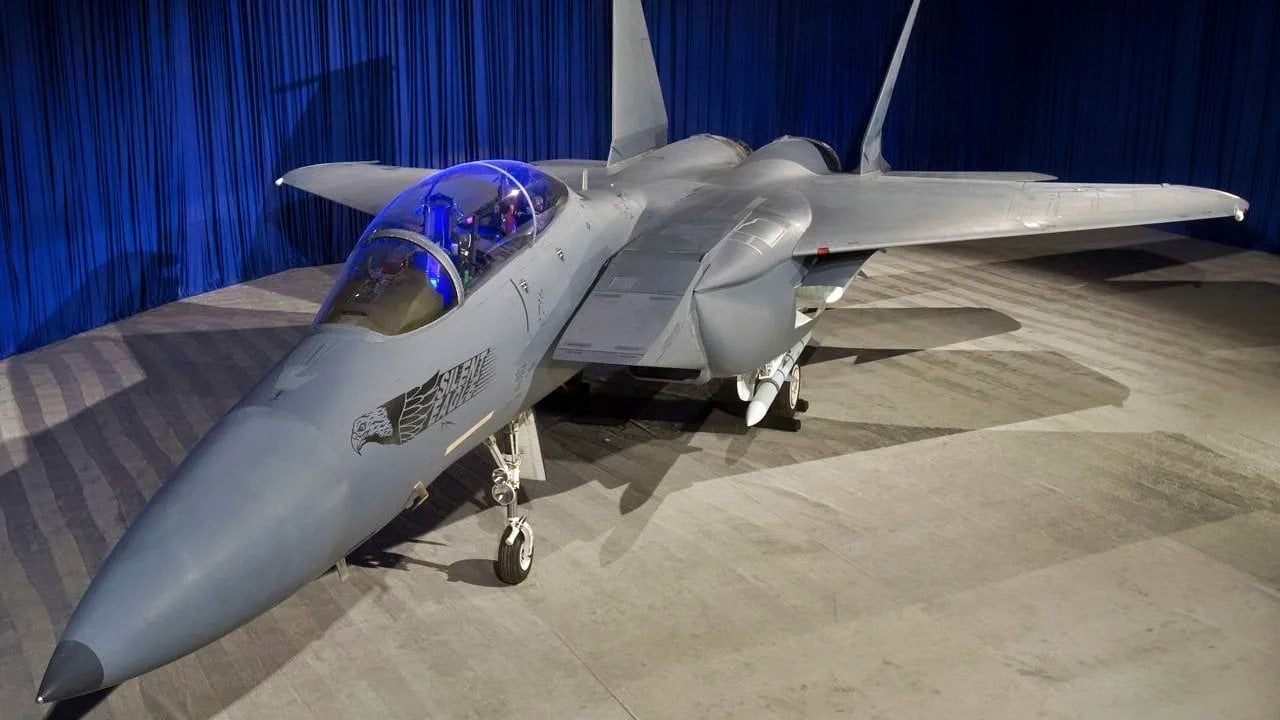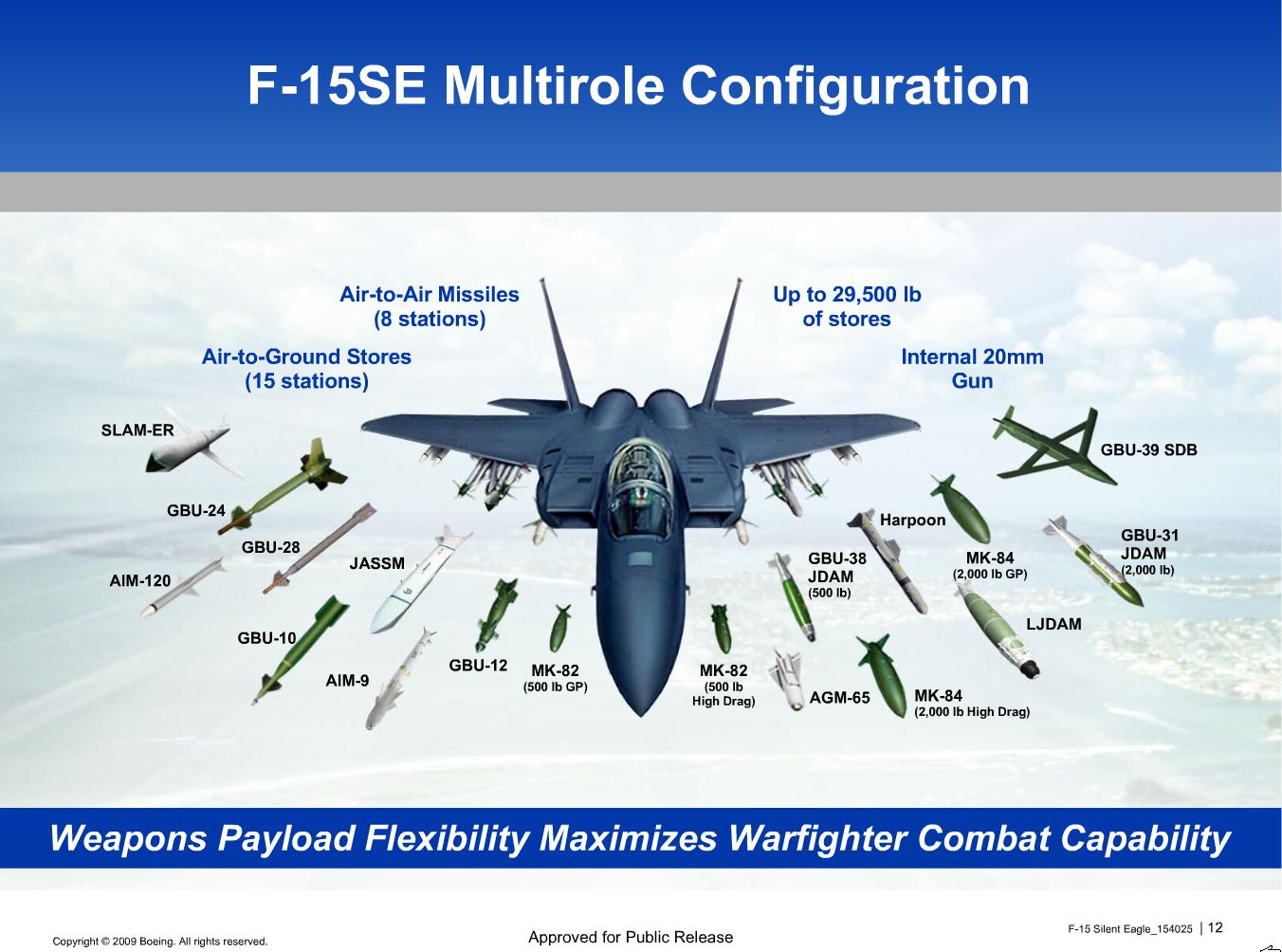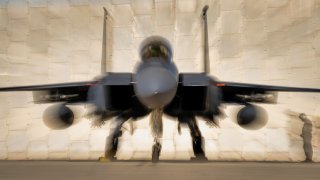F-15SE Silent Eagle: The 'Stealth Fighter' the Air Force Said 'No' To
The F-15SE Silent Eagle, developed by Boeing in 2009, was an advanced variant of the F-15E Strike Eagle, designed to compete with Lockheed Martin’s F-35 Lightning II. It boasted stealth features, including canted vertical stabilizers and conformal fuel tanks, reducing radar cross section and increasing range.
Summary and Key Points: The F-15SE Silent Eagle, developed by Boeing in 2009, was an advanced variant of the F-15E Strike Eagle, designed to compete with Lockheed Martin’s F-35 Lightning II. It boasted stealth features, including canted vertical stabilizers and conformal fuel tanks, reducing radar cross section and increasing range.

-Equipped with advanced avionics, sensors, and weapons systems, it could perform multiple mission sets. Despite its lower cost and impressive capabilities, South Korea opted for the F-35, leading to the Silent Eagle's discontinuation.
-This decision left a gap in affordable, stealthy fourth-generation fighters, potentially limiting the diversification of modern air combat capabilities.
Why the F-15SE Silent Eagle Failed to Fly
The F-15SE Silent Eagle, developed by Boeing in 2009, was an advanced variant of the F-15E Strike Eagle, designed to compete with Lockheed Martin’s F-35 Lightning II.
It boasted stealth features, including canted vertical stabilizers and conformal fuel tanks, reducing radar cross section and increasing range. Equipped with advanced avionics, sensors, and weapons systems, it could perform multiple mission sets. Despite its lower cost and impressive capabilities, South Korea opted for the F-35, leading to the Silent Eagle's discontinuation.
This decision left a gap in affordable, stealthy fourth-generation fighters, potentially limiting the diversification of modern air combat capabilities.
The F-15SE Silent Eagle: What Should Have Been
The F-15SE Silent Eagle was a proposed all-weather multirole strike fighter developed by Boeing. A variant of the F-15E Strike Eagle, the aircraft was first conceptualized in 2009. It was supposed to pull business away from Lockheed Martin’s F-35 Lightning II by offering a cheaper but still stealthy warplane.
While still a fourth-generation aircraft, the Silent Eagle’s stealth capabilities were beyond anything its F-15 siblings could offer. A number of features would have reduced its radar cross section and improved its survivability in contested airspace.
The Specs for the F-15SE
Possessing advanced avionics, sensors, and weapons systems, the Silent Eagle was designed for a variety of important mission sets.

It could arm a variety of air-to-air missiles, including the AIM-9 Sidewinder and AIM-120 AMRAAM. Air-to-ground munitions included the Joint Direct Attack Munition and Small Diameter Bomb. The bird would have carried AGM-84 Harpoon missiles as well as AGM-65 Mavericks.
The Silent Eagle would have flown with external fuel tanks for extended range. These Conformal Fuel Tanks increased the aircraft’s internal fuel capacity. The stealthy warbird would have possessed vertical stabilizers that were canted outward at 15 degrees. (All other F-15 models have perfectly parallel stabilizers.)
These stabilizers reduced radar cross section, but they also increased its range by 75–100 miles over the jet’s non-stealthy predecessors.
The aircraft was to feature a Digital Electronic Warfare suite for electronic attack and protection. The Silent Eagle had Infrared Search and Track for passive detection and tracking of enemy aircraft. Advanced countermeasures dispensers for chaff and flares were included. An F-15 Silent Eagle would have packed a powerful radar system for enhanced situational awareness and electronic warfare capabilities.
South Korea Almost Bought the F-15SE Silent Eagle
The South Korean Air Force considered purchasing these birds in 2009 at $100 million per unit (as opposed to the F-35 at $176 million per unit). Ultimately, however, South Korea went with the pricier, fifth-generation warplane.
South Korea is a medium power, and Seoul now seeks to build its own indigenous warplane, the KF-21. It might have just made more sense to purchase a tranche of the F-15 Silent Eagles. Their capabilities would have been impressive. They come from an established global supply chain. They’re advanced, but not so complex that it would be a catastrophe to lose or damage one in combat.
Seoul went with the fifth-generation bird. Because of that, we never got to see a stealthy variant of the ubiquitous American F-15. Too bad. It might have helped plug some significant gaps in America’s overall defense.

Author Experience and Expertise: Brandon J. Weichert
Brandon J. Weichert, a National Interest national security analyst, is a former Congressional staffer and geopolitical analyst who is a contributor at The Washington Times, the Asia Times, and The-Pipeline. He is the author of Winning Space: How America Remains a Superpower, Biohacked: China’s Race to Control Life, and The Shadow War: Iran’s Quest for Supremacy. His next book, A Disaster of Our Own Making: How the West Lost Ukraine, is due October 22 from Encounter Books. Weichert can be followed via Twitter @WeTheBrandon.
All images are Creative Commons or Shutterstock.
From the Vault
Russia Freaked Out: Why the U.S. Navy 'Unretired' the Iowa-Class Battleships
Battleship vs. Battlecruiser: Iowa-Class vs. Russia's Kirov-Class (Who Wins?)


